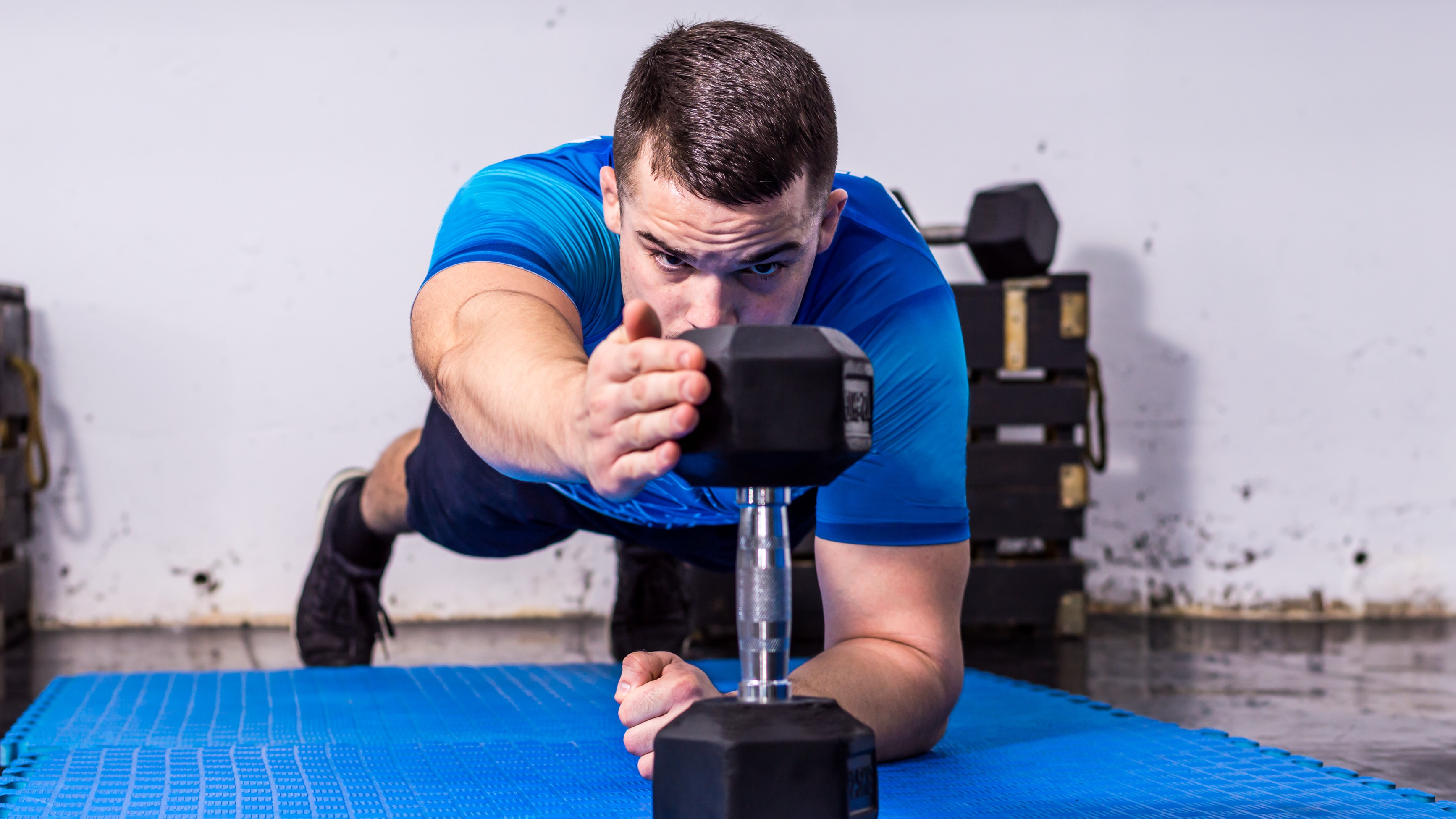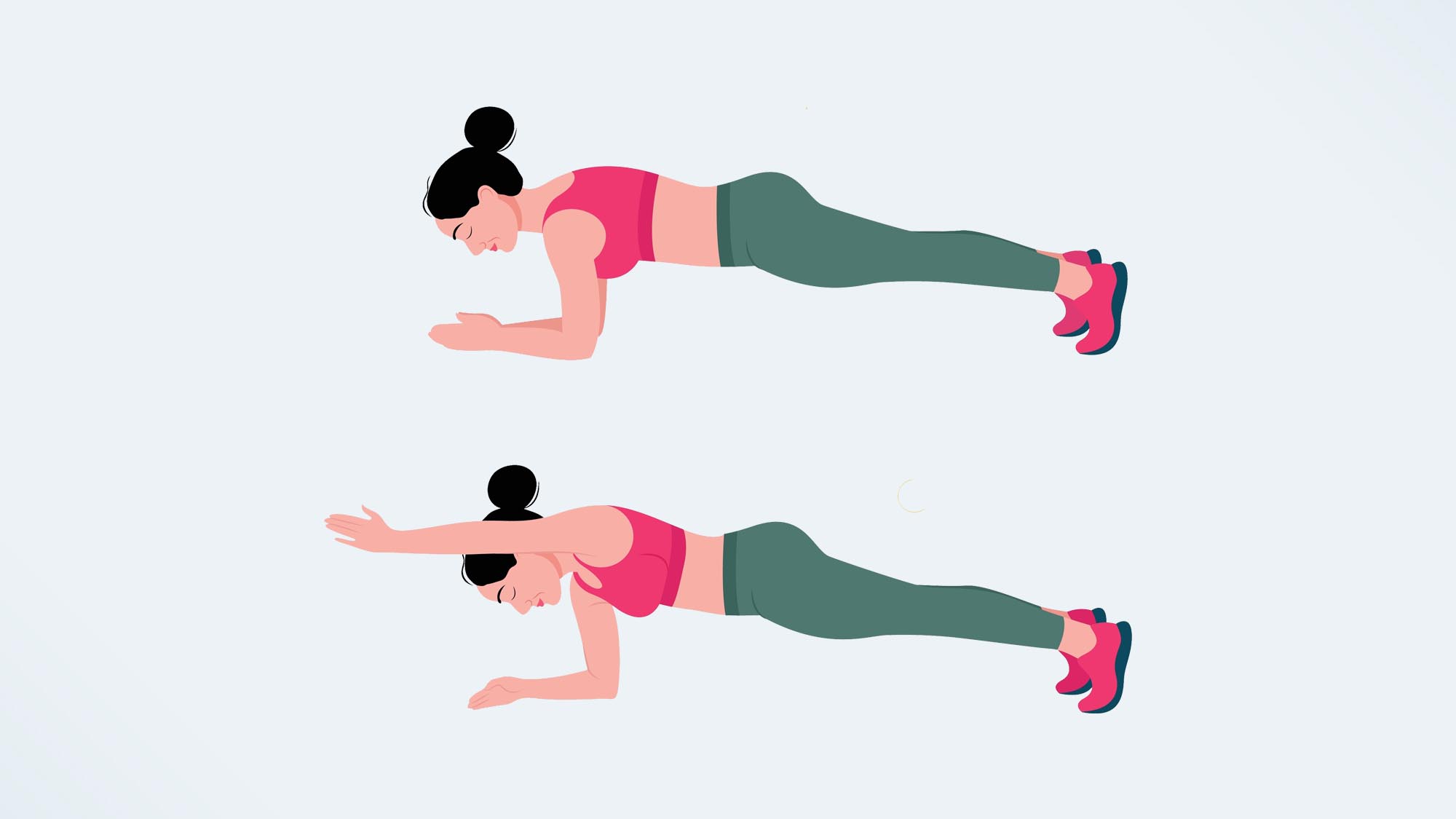
Here on the Tom’s Guide fitness desk, there’s nothing we love more than a plank variation. Next up on my list of activities to add to my routine for a week was the plank reach, an exercise that works the six-pack muscles (the rectus abdominis), the deepest abdominal muscles (the transverse abdominis), and the internal and external oblique muscles, as well as the shoulders and the lower back.
But how do you do it, and what would doing 50 reps a day do my core? Read on to find out.
As a reminder, what works for me might not be right for you and your body. If you’re new to exercise, or you’re returning to exercise following an injury, time off, or pregnancy, it’s a good idea to check with a doctor before trying planks. If you have a weakened pelvic floor, or have Diastastis Recti, holding planks can make things worse. If you’re new to planks, it’s worth checking your form with a personal trainer before trying different plank variations.
How to do a plank reach
To do a plank reach, you’ll first need to have mastered the regular high plank position. Here’s more on how to do a plank with perfect form. Although you might want to place one of the best adjustable dumbbells or best kettlebells in front of you to reach for, you don’t need any additional equipment for this exercise.

- Start in a high plank position, with your wrists stacked underneath your shoulders, and your palms pressed into your exercise mat. You can also do this exercise from a low plank, with your body weight on your elbows.
- Engage your core, and make sure your back is straight.
- Lift one hand off the exercise mat, and stretch it out in front of your body, so that your arm is parallel to the ground. Make sure the rest of your body stays still and that your hips don’t drop down to one side.
- Lower your hand back to the mat, and repeat on the opposite side.
- Keep switching sides throughout.
As with all plank exercises, good form is important. Ensure your abs stay engaged throughout the exercise, and your back straight. Don’t let your hips sag to the floor or your lower back arch during the exercise — instead, think about sucking your belly button in towards your spine.
If the plank reach is too difficult, build up your strength with regular planks, or drop to your knees or elbows to make the move easier.
I did 50 plank reaches every day for a week — here’s what happened
I had to slow down and think about my form
As with all of these challenges, on day one I asked a personal trainer to take a look at my form, to ensure I was moving correctly, before adding it to my routine for a week. She immediately told me to slow down and focus on extending my arm away from my body with control, and more importantly, without rocking my hips. Unlike the walking plank, the goal with the plank reach isn’t speed.
I found it easier to place a dumbbell a few feet away from me and tap the top of the dumbbell with every reach. I found my oblique muscles had to work a lot harder than they did in a regular plank to stabilize my body.
I had to focus on not rocking my hips
As the week went on, I got more confident and a little quicker with my plank reaches, but I really had to focus on not rocking my hips and body from side to side as I reached. As with a regular plank or forearm plank, your body should stay straight and still during the move. After 50 reps each day, I felt the move in my deltoid muscles as much as my core.
This was one of my favorite plank variations to date
It’s not often I do the same exercise every day for a week and still like it by day seven, but I enjoyed the plank reach a lot. It made me notice my dominant, right-hand side was stronger than my left, giving me a lot to work on in the gym.
Of course, I didn’t notice any physical difference in my body after a week — unfortunately, it takes a lot longer than seven days to sculpt strong muscles. If visible abs are your goal, you’ll also need to focus on your overall body fat percentage, not how long you can hold a plank. Diet, cardio levels, hormones, stress, and sleep can all impact your overall body fat percentage — here’s how to calculate yours, and why it matters.







